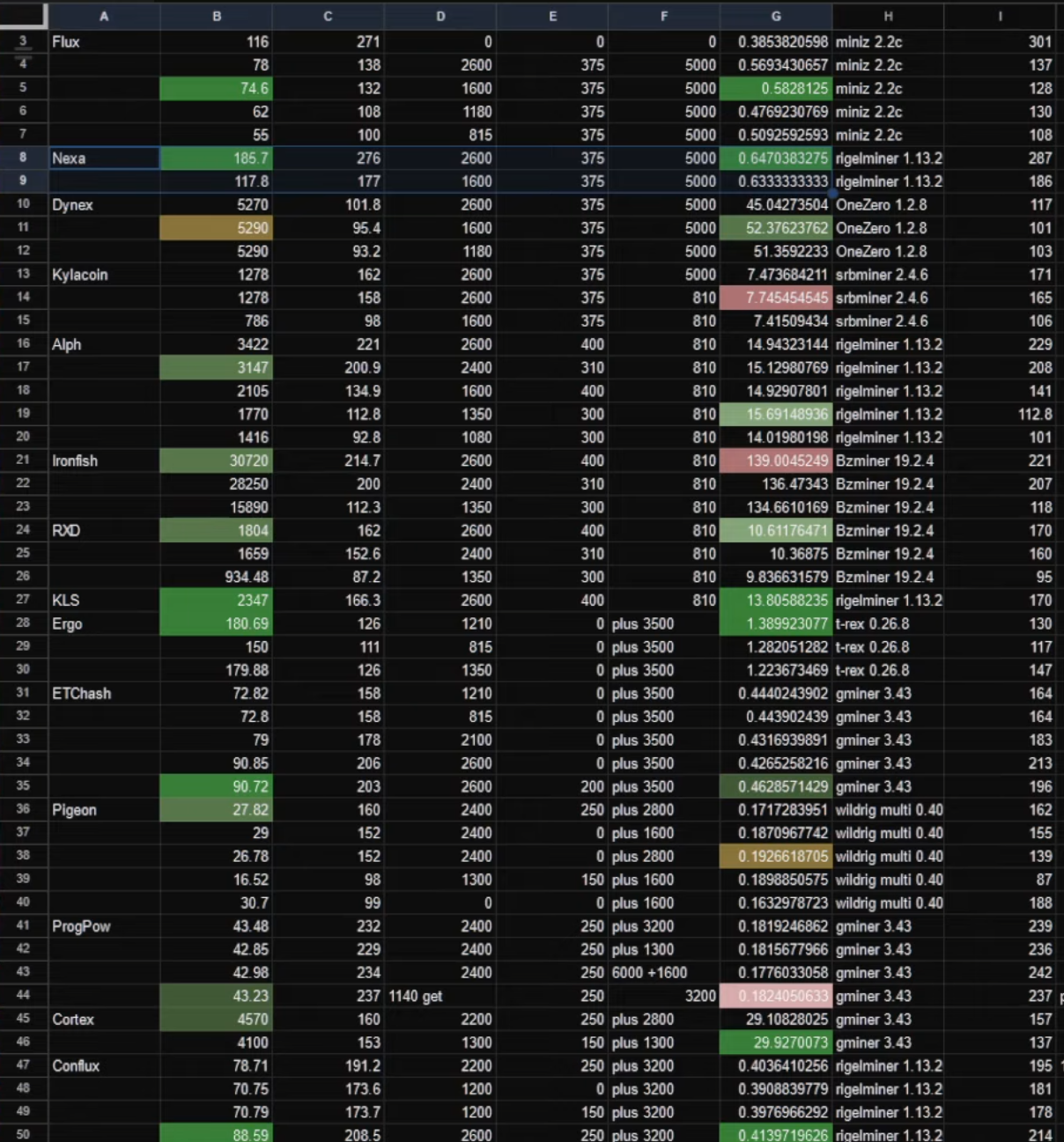 The Nvidia GeForce RTX 4070 Ti Super graphics card is the second new enhanced model introduced by Nvidia at the CES exhibition in January 2024. Of all three models, RTX 4070 Super, RTX 4070 Ti Super, and RTX 4080 Super, it is the 4070 Ti Super that has undergone the most significant technical changes compared to the original version of the RTX 4070 Ti. Besides the increase in CUDA cores, this model has also received a wider memory bus at 256-bit, instead of 192-bit in the RTX 4070 Ti, providing a significant advantage in mining cryptocurrencies like Ethereum Classic and Ravencoin, where hashrate depends not only on a powerful GPU but also on fast memory. We will further examine how such technical changes will affect cryptocurrency mining in this review of the RTX 4070 Ti Super graphics card.
The Nvidia GeForce RTX 4070 Ti Super graphics card is the second new enhanced model introduced by Nvidia at the CES exhibition in January 2024. Of all three models, RTX 4070 Super, RTX 4070 Ti Super, and RTX 4080 Super, it is the 4070 Ti Super that has undergone the most significant technical changes compared to the original version of the RTX 4070 Ti. Besides the increase in CUDA cores, this model has also received a wider memory bus at 256-bit, instead of 192-bit in the RTX 4070 Ti, providing a significant advantage in mining cryptocurrencies like Ethereum Classic and Ravencoin, where hashrate depends not only on a powerful GPU but also on fast memory. We will further examine how such technical changes will affect cryptocurrency mining in this review of the RTX 4070 Ti Super graphics card.
Comparison of the RTX 4070 Ti vs. RTX 4070 Ti Super
| Specifications | RTX 4070 Ti |
RTX 4070 Ti Super |
RTX4070Ti VS RTX4070Ti Super |
|---|---|---|---|
| Release date | 05.01.2023 | 24.01.2024 | |
| Frequency GPU (BOOST) MHz | 2310 (2610) | 2340 (2610) | - |
| Cuda Cores | 7680 | 8448 | +10% |
| GFLOPS FP32 | 40090 | 44100 | +10% |
| Memory | 12Gb GDDR6X | 16GB GDDR6X | +33% |
| Memory bus width, bit | 192 | 256 | - |
| Total memory bandwidth,Gbit/s | 504 | 672 | +33% |
| Power usage | 285W | 320W | +12% |
| Price, USD | 799 USD | 799 USD | - |
It can be observed that the memory capacity has been increased by one-third from 12GB to 16GB, but for mining, even 8GB of video memory is more than sufficient at the moment. However, the increase in memory bandwidth by the same 33%, from 504 Gbit/s to 672 Gbit/s, will directly affect the hashrate on algorithms such as Ethash and Kawpow. In other words, the hashrate on these algorithms will also increase proportionally by 33%. For GPU-dependent algorithms, the increase in CUDA cores by 10% will also yield more hashes on Octopus, IronFish, MTP, and Beam.
Compared to the previously reviewed RTX 4070 Super graphics card, where only CUDA cores were increased by 21%, the RTX 4070 Ti Super appears as a more balanced solution for mining.
Let's put this to the test.
Hashrate of the RTX 4070 Ti Super
ETHash/ETChash (Ethereum classic): 90Mh/s 206W
EthashB3 (Hypra): 90Mh/s 206W
NexaPow (Nexa): 185Mh/s 276W
DynexSolve (Dynex): 5.29Mh/s 95W
Blake3 (Alephium): 3.4Gh/s 220W
Blake3Ironfish (Ironfish): 30,7GH/s 214W
Radiant (Radiant): 1.8GH/s 162W
Autolykos2 (Ergo): 180Mh/s 126W
Karlsenhash (Karlsen): 2340Mh/s 166W
Pyrinhash (Pyrin): 10Gh/s 197W
Octopus (Conflux) 88Mh/s 208W
Equihash 125/4 (Flux) 116Mh/s 271W
ProgPowSero (Sero) 43Mh/s 234W
A more detailed overview of the hashrate of the RTX 4070 Ti Super graphics card in various operating modes can be found in the table below:

You can calculate mining profitability and compare it with other graphics cards on the Profit-mine.com website.
Conclusion: As expected, the RTX 4070 Ti Super graphics card has proven itself in mining only from its best side, with the only negative aspect when choosing this particular graphics card being its price. Since the cost of the RTX 4070 Ti Super is 33% higher than that of the RTX 4070 Super, but the increase in hashrate is only observable on a limited number of mining algorithms, the increased price-to-hash ratio of this card seems slightly overestimated. However, this trend of increasing the cost per hash with the increase in graphics card power has been present in the market for several years now. In this case, to become an optimal solution for mining, this graphics card should be priced $100 cheaper at launch. That is, $699 instead of the stated $799.









